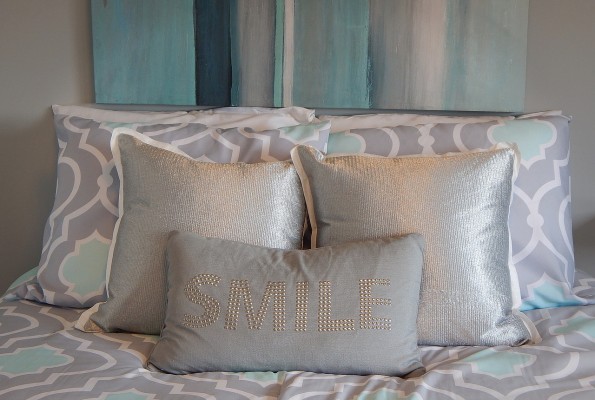
It sounds easy, but... the bed sheet is too short, too long, wrinkled, out of axis … In few words, making the bed, which is a daily operation for many, may turn into an actual nightmare. No fear, here are some suggestions to pass the bed sheet-test at its best and astonish your mother, grandmothers and aunts!
The preliminaries
First of all, hygiene: a well aerated room (and – when feasible – a mattress directly 'bathed' by the sun rays) is what you need to keep your bed healthy. Windows wide open, then, even before starting the operations.
Clearing
The first step is clearing everything: blankets, bedcover, bed sheets, pillowcases, pillows and topper.
'Beating'
This is the moment of the mechanical action. The mattress must be shaken, lifted and beaten to remove the dust and mites, if any.
Cleaning
You then need to dust under the bed, sweeping and vacuum cleaning the whole room, to then end by a 'pass' of mop soaked in water and disinfectant (warning: avoid any too aggressive chemicals, peroxide is a good option).
The first layer: the topper
We are then moving to the recomposition of the bed; here, you must proceed with surgical accuracy, firm hand and great attention. After detecting the right side, you need to introduce the first shape angle. Unlike the habits of the many, the second angle to adjust is the one at the opposite diameter, in order to form a diagonal that cuts the mattress (this would not apply if the topper is too narrow...). Once you reach the third angle you should repeatedly smooth with your hand until you stretch the fabric well and eliminate any wrinkles and depressions. Proceed then with the last angle and pull all the sides of the topper until you take them under the mattress. Repeat the manual 'smoothing' until the surface is perfect.
The second layer: the lower bed sheet
For the lower bed sheet, you can follow the procedure you used for the topper, paying attention not to wrinkle the fabric you have already settled.
The third layer: the upper bed sheet
At this point, much has already been done, so mind not to lose your concentration. The upper bed sheet must be laid 'face down' throughout its surface. To adjust the position pull with both ends, with your arms stretched as much as you can, so that the edges settle evenly; this technique prevents the generation of wrinkles on either the top or the bottom. Once the position is adjusted, the bed sheet must be set under the mattress, starting from the short side, i.e. the one at the feet. If required, the operation can be repeated also at the sides. In this case, the best technique is to take the side portion of the bed sheet, lift it, let the lower angle slide under the mattress and introduce the side part – the lifted one – only after that, in order to obtain an 'envelope' closing.
The fourth layer: the blanket
The blanket must be set following the same indications that apply to the upper bed sheet, but – in this case – the edge you locate next to the pillows must be set immediately before the pillows. Once the operation is made the upper bed sheet must be folded 'leaning' on the line of the upper edge of the blanked. It must be folded and stretched; then repeat the 'smoothing' operation with your hands.
The pillows
This is the moment of the pillowcases. To perfectly 'dress' your pillow, proceed by taking the sewn side with one hand. The 'reverse the pillowcase until it covers your whole forearm. Then grab the pillow from one of the sides using the hand that holds the sewn edge of the pillowcase and reverse it again around the pillow. Then grab the pillowcase from the open side and let it rock, so that gravity facilitates fitting. One you have located also the pillows and the bedcover – if any – move three steps behind, take a run-up and… jump onto the bed. Have fun! :-D

